The Galaxy Note20 Ultra 5G is Samsung’s top-of-the-line “phablet” that combines some heavy-hitting computing power with a 6.9-inch OLED screen display, along with the stylus that gives the device its name. The computing power comes in two flavors — one is the brand’s own Exynos 990 chipset in devices sold in Asia and most of the rest of the world, and the other is the Qualcomm Snapdragon 865+ for sale in North America.
Like the Exynos version, the Samsung Galaxy Note20 Ultra 5G (Snapdragon) promises excellent recording and playback quality, in part thanks to Dolby Atmos/AKG sound. Its AOP microphone is said to help produce quality recordings even with loud background noise. Because the chipset plays an important role in how a device is tuned for audio (as well as for display and camera applications), we were curious to see how the Exynos and Snapdragon versions of the Note20 Ultra 5G would compare.
Audio specifications include:
- Stereo speakers
- Surround sound with Dolby Atmos technology (Dolby Digital, Dolby Digital Plus included)
- High AOP (acoustic overload point) microphone
- Dual Audio (user can connect two Bluetooth devices for simultaneous playback)
About DXOMARK Audio tests: For scoring and analysis in our smartphone audio reviews, DXOMARK engineers perform a variety of objective tests and undertake more than 20 hours of perceptual evaluation under controlled lab conditions. This article highlights the most important results of our testing. Note that we evaluate both Playback and Recording using only the device’s built-in hardware and default apps. (For more details about our Playback protocol, click here; for more details about our Recording protocol, click here.)
Test summary


Both the Snapdragon and Exynos versions of the Samsung Galaxy Note20 Ultra 5G have been through several of DXOMARK’s test protocols, with best marks awarded for Display, where the two versions of the device sit atop the rankings with nearly identical scores. (The Snapdragon version, however, placed first.)
As for audio, the Snapdragon version matches the previously tested Samsung Galaxy Note20 Ultra 5G (Exynos) with an above-average overall score of 68. As the rankings currently stand, this puts the two devices in a group of five tied for 13th place for smartphone audio. The test results for both devices are similar in both playback and recording, but there are a few interesting differences.
In Playback testing, both the Exynos and Snapdragon versions of the flagship phablet delivered very high marks for controlling undesirable artifacts. Both deliver above-average performance for dynamic range and both have above-average volume performance. On the other hand, shared flaws include a lack of high-end extension that gets in the way of the overall tonal balance, and in landscape mode, the left/right balance is shifted to the lower right. One interesting divergence here is that the lack of a lower spectrum is slightly more pronounced on the Snapdragon version of the device, which contributed to a small decrease in scores for bass and bass precision.
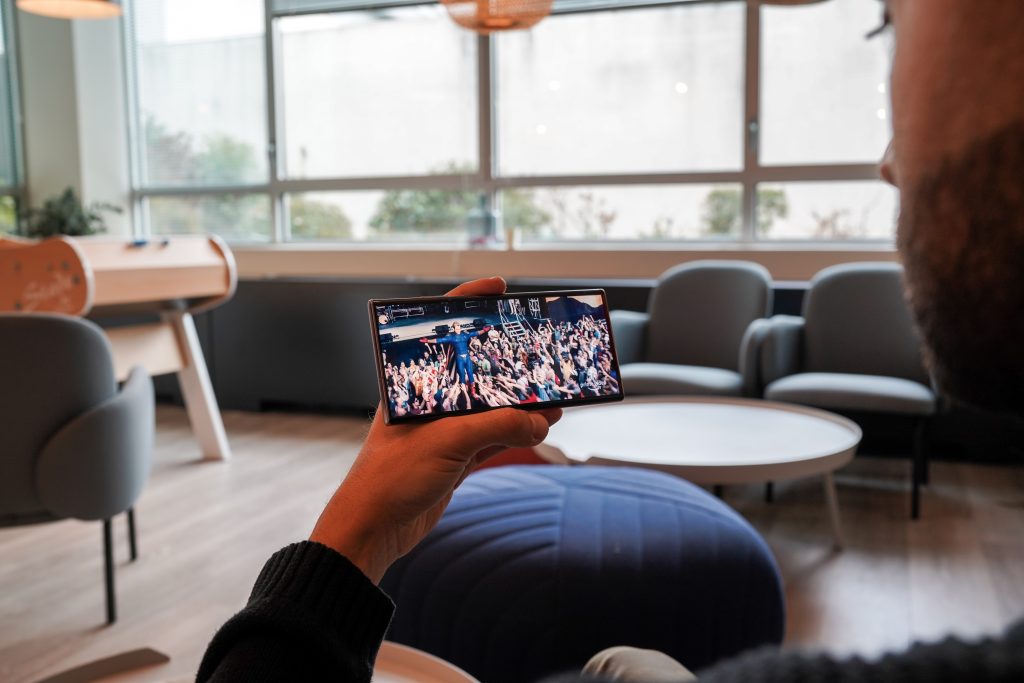
As recording devices, the two versions of the Galaxy Note20 Ultra both deliver good timbre performance, with good dynamics, precise high-end frequencies when shooting video with the rear camera, and good loudness in both selfie and memo apps. Both produce great loudness in the memo and selfie apps. In terms of shortcomings, mono recording in the memo app greatly affected the scores for wideness and localizability. Tonal balance is hindered by the lack of low-end extension, especially in portrait mode.The Snapdragon version of the device scored somewhat lower on timbre and envelope because a slight lack of low-mids.
Sub-scores explained
The DXOMARK Audio overall score of 68 for the Samsung Galaxy Note20 Ultra 5G (Snapdragon) is derived from its Playback and Recording scores and their respective sub-scores. In this section, we’ll take a closer look at these audio quality sub-scores and explain what they mean for the user.
Playback

Timbre
Samsung Galaxy Note20 Ultra 5G (Snapdragon)
61
89
Timbre tests measure how well a phone reproduces sound across the audible tonal range and takes into account bass, midrange, treble, tonal balance, and volume dependency.

Like the Exynos version, the Samsung Galaxy Note20 Ultra 5G (Snapdragon) produces a fairly good timbre performance, with precise midrange frequencies allowing a good rendering of voices and of such midrange instruments as guitar and violin, for example. A lack of high-ends impairs the overall tonal balance, though, leading to voices sometimes being muffled. Although the chart below shows just how closely the two align (you cannot see any separation in the lines charting performance), our engineers noted a slight but detectable difference between the two versions of the Note20, with the Snapdragon lacking bass just a bit compared to the Exynos version. In portrait mode, the Galaxy Note20 Ultra 5G (Snapdragon) exhibits a lack of low extension.

Dynamics
Samsung Galaxy Note20 Ultra 5G (Snapdragon)
65
81
DXOMARK’s dynamics tests measure how well a device reproduces the energy level of a sound source, and how precisely it reproduces bass frequencies.
The dynamics score of 65 places the Note20 Ultra (Snapdragon) 10 points off the category-leading Huawei Mate 20 X, and one point below the Exynos version. That said, its dynamics performance is above average. Attack is good at nominal levels, though a bit underwhelming at soft volumes. Bass precision is hindered by the lack of low-end extension. At soft volumes, punch is smoothed over by the lack of bass, while overcompression affects it at maximum levels. Compared with the Exynos version, the bass precision is slightly impaired by the extra lack of bass.

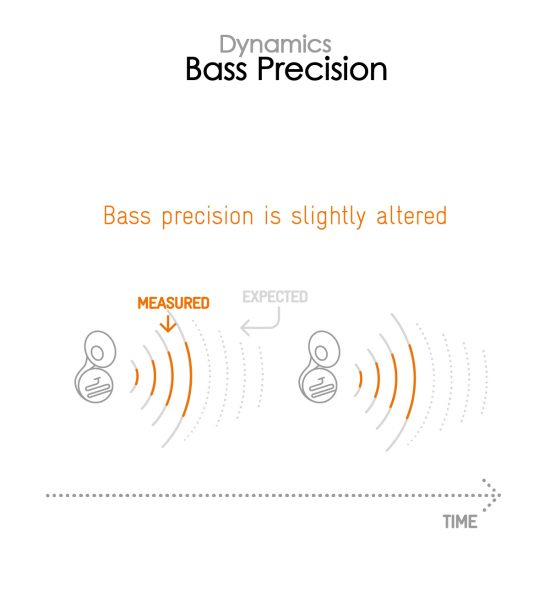

Spatial
Samsung Galaxy Note20 Ultra 5G (Snapdragon)
62
88
The sub-attributes for perceptual spatial tests include localizability, balance, distance, and wideness.

The Samsung Galaxy Note20 Ultra 5G (Snapdragon) delivers fairly good spatial performance overall, in line with the Exynos version. The lack of high-end extension in both the Snapdragon and Exynos devices results in a lower score for localizability when playing back any kind of content through the speakers, whether it’s music, movies, or games. Wideness performance is good, especially when watching movies.
Our engineers noted that the balance is shifted to the bottom right, where the strongest speaker fires. Muffled timbre affects distance performance, making it seem like voices are coming from outside the screen position.
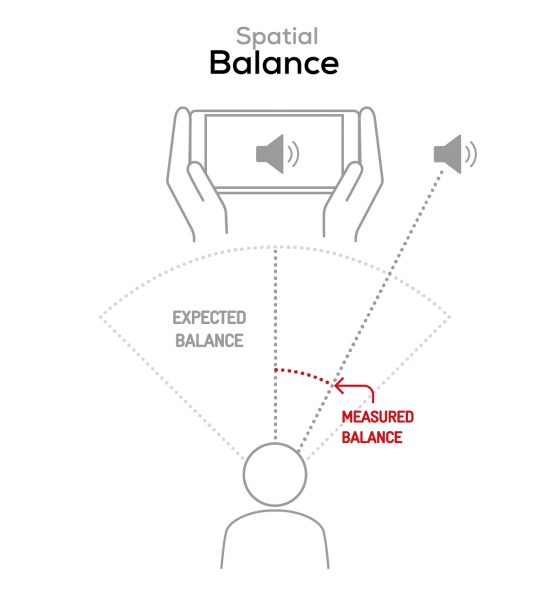
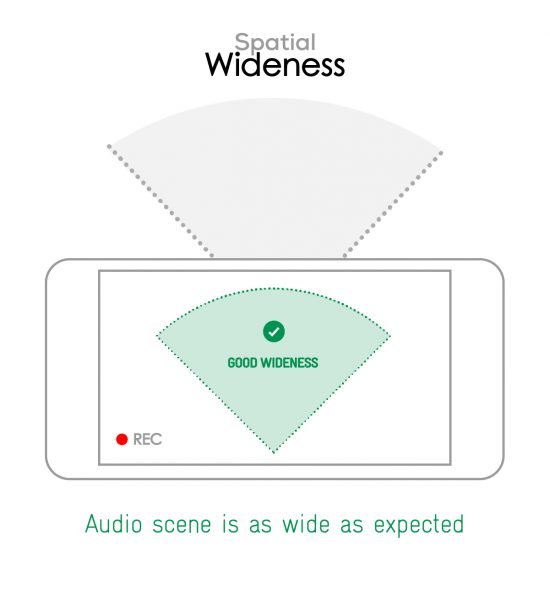

Volume
Samsung Galaxy Note20 Ultra 5G (Snapdragon)
66
91
Volume tests measure both the overall loudness a device is able to reproduce and how smoothly volume increases and decreases based on user input.
In volume testing, Samsung’s Galaxy Note20 Ultra (Snapdragon) smoothly increases volume, as shown in the graph above. The maximum volume is quite good, but minimum volume was too low — soft content such as classical music was difficult to hear.
| Hip-Hop | Classical |
| 72.6 dBA | 69.9 dBA |

Artifacts
Samsung Galaxy Note20 Ultra 5G (Snapdragon)
90
113
Artifacts tests measure how much source audio is distorted when played back through a device’s speakers. Distortion can occur both because of sound processing in the device and because of the quality of the speakers.
The Galaxy Note20 Ultra 5G (Snapdragon) equals the Exynos version with a top sub-score of 90, matched only by the Black Shark 3 Pro. Very few artifacts are noticeable at either nominal or maximum volume. Some bass distortion at maximum volume is perceivable.
Recording

Timbre
Samsung Galaxy Note20 Ultra 5G (Snapdragon)
76
91
With a solid performance, the Galaxy Note20 Ultra (Snapdragon) achieved the same score as the Exynos version in the category of recording timbre, but there were a few slight variations in the details. In life video (recording while using the rear camera), the Snapdragon version of the device produced good timbre, with precise high ends in recordings with loud background noise. In our selfie video category, however, voices show a lack of high-end extension and there are prominent resonances in the midrange.
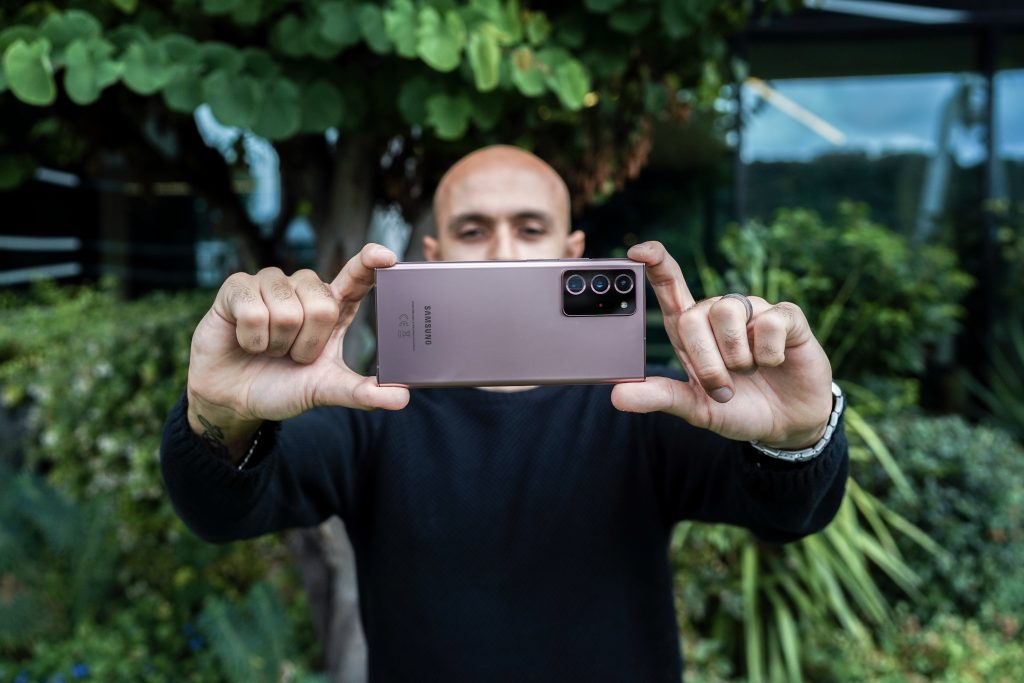
In the memo app, the Note20 Ultra 5G (Snapdragon) produced good timbre with precise midrange, despite resonances in the high end. At high sound pressure levels (as in an electronic concert setting), the timbre is slightly boomy, but still natural-sounding.
There were some differences between the Exynos and Snapdragon versions. With loud background noise, the Snapdragon version lacked low-mids in life video. There was slightly more treble — still muffled — in selfie video, which also showed a slight excess of high-mids.

Dynamics
Samsung Galaxy Note20 Ultra 5G (Snapdragon)
64
81
The Snapdragon version’s recording dynamics score of 64 is slightly below that of the Exynos version, which earned a 66. Still, this is a fairly good dynamics performance. Good preservation of the envelope makes plosives (“p” and “b” sounds) clearly audible. The signal-to-noise ratio was good in life video, thanks to clean treble. High-end resonances enhance background noise in selfie video, lowering the signal-to-noise ratio. Dominant low-mids in the memo app hinder plosives. In loud environments, recordings lack punch.
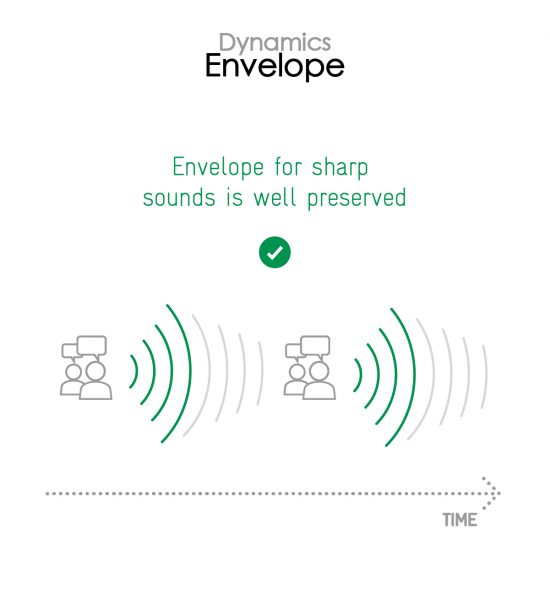
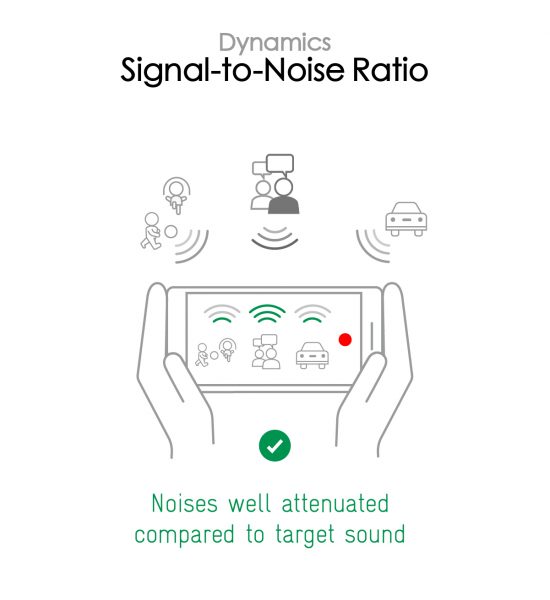
When recording with loud background noise, the Snapdragon version of the Note20 Ultra produced a slightly less precise sound envelope in both life video and the memo app, but its performance was actually better than that of the Exynos in selfie video.

Spatial
Samsung Galaxy Note20 Ultra 5G (Snapdragon)
60
78
As with the Exynos version of the Galaxy Note20 Ultra 5G, the Snapdragon device performs fairly well in the spatial recording attribute when recording with the rear camera in life video. The perceived distance of voices is realistic, and the localizability and wideness are both excellent. In selfie video, however, wideness is poor, despite the implementation of the directivity algorithm, which attenuates voices on the side of the recorded audio scene instead of the meaningful signals in the center. In the memo app, mono recording hinders both wideness and localizability.
Our engineers noticed an interesting detail in the performance of the Snapdragon version in life video, which rendered whispering voices as too close compared with the performance of the Note20 Ultra 5G (Exynos.)
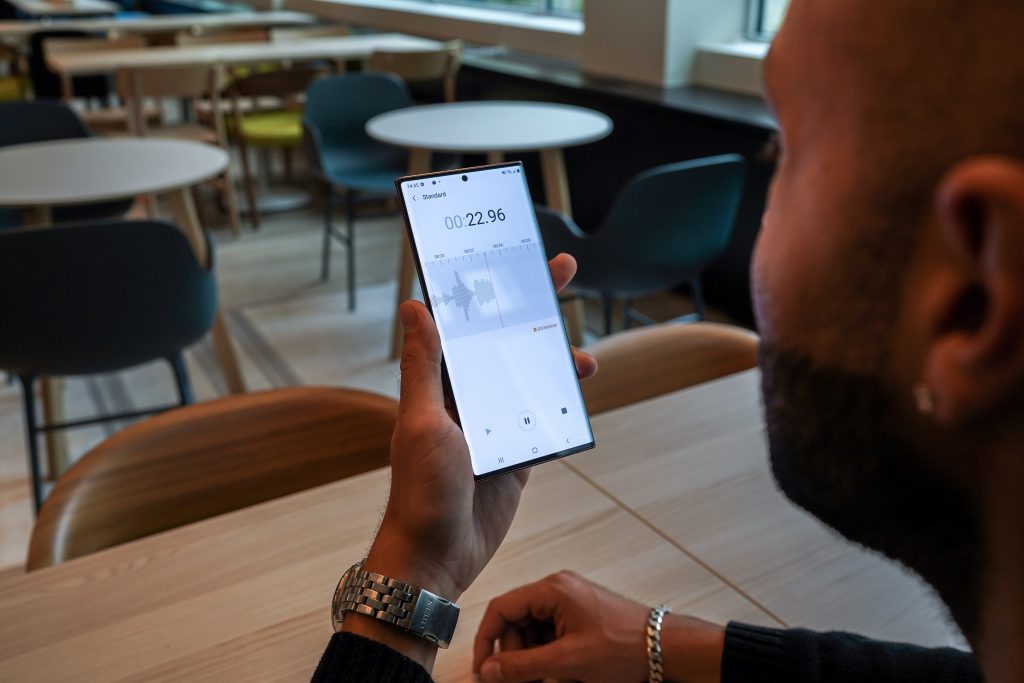
Because the memo app records in mono, the overall spatial score suffers, severely hindering wideness and localizability.

Volume
Samsung Galaxy Note20 Ultra 5G (Snapdragon)
69
99
The volume performance of the Galaxy Note20 Ultra 5G (Snapdragon) was good, and great in the selfie and memo apps. Compared with the Exynos version of the device, however, selfie recordings are slightly less loud.
Here are our test results, measured in LUFS (Loudness Unit Full Scale). As a reference, we expect loudness levels to be above -24 LUFS for recorded content:
| Meeting | Life Video | Selfie Video | Memo |
| -22.2 LUFS | -23.7 LUFS | -23 LUFS | -26.2 LUFS |

Artifacts
Samsung Galaxy Note20 Ultra 5G (Snapdragon)
73
97
The Galaxy Note20 Ultra 5G (Snapdragon) again matched the Exynos version in this attribute: both devices are well above average with a score of 73. In the meeting and selfie use cases, there were neither temporal nor spectral artifacts and the results were also good in the meeting room scenario.
There was some slight hissing and pumping in loud environments, and shouting voices produced some distortion and overcompression. Occlusion from the user’s hand induced some slight timbre and balance changes, but they are managed well overall. Moving the finger over the microphone provokes pumping and loud noises.
You can hear some of those artifacts for yourself in this sample recording:

Background
Samsung Galaxy Note20 Ultra 5G (Snapdragon)
33
60
The background performance was good overall, but the score would have been higher if the memo app recorded in stereo. As with the Exynos version of the device, the minor lack of bass renders background sound as slightly unnatural, especially when filming selfie videos. We noted that background noise is slightly more audible on the Snapdragon version of the device.
Conclusion
The Samsung Galaxy Note20 Ultra 5G (Snapdragon), like its Exynos sibling, turns in a solid audio performance, with above-average scores for dynamics and volume, and an exceptional score when it comes to artifacts in playback. As for drawbacks, the lack of high-end extension hindered tonal balance and spatial performance, and balance shifts to the bottom right in landscape mode. The Note20 Ultra 5G (Snapdragon) has a slight lack of lower spectrum sound compared to the Exynos version, which contributed to a small drop in bass and bass precision scores.
The Samsung device also performs admirably as a recording device, with good reproduction of timbre and great loudness in the selfie video and memo apps. Its recording score could easily have been higher had its memo app not been strictly mono. Tonal balance was hindered by the lack of low-end extension, especially in portrait mode. In the Snapdragon version, the slight lack of low-mids had an impact (though minor) on its timbre and envelope scores.
Playback
Pros
- Above-average dynamics performance
- Above-average volume performance
- Great artifacts performance
Cons
- Lack of high-end extension affects tonal balance and spatial performance.
- Balance is shifted to the bottom right.
Recording
Pros
- Good timbre performance
- Great loudness in selfie videos and in the memo app
Cons
- Mono recording of the memo app impairs wideness and localizability.
- Tonal balance is impaired by the lack of low-end extension, especially in portrait mode.


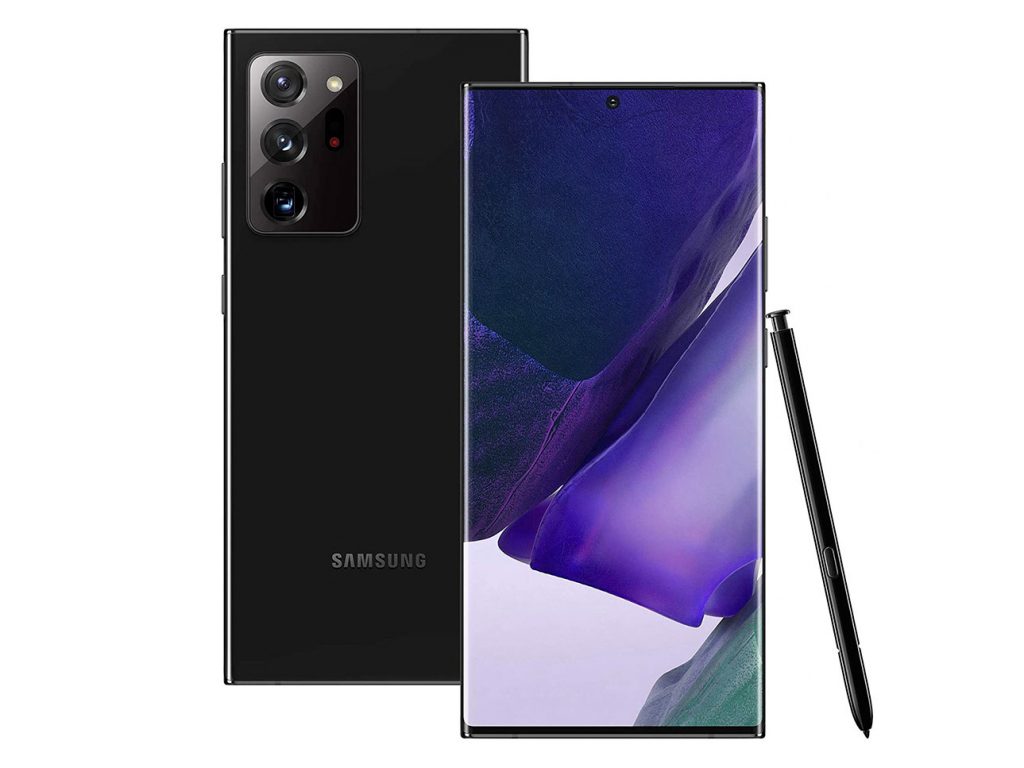
DXOMARK encourages its readers to share comments on the articles. To read or post comments, Disqus cookies are required. Change your Cookies Preferences and read more about our Comment Policy.